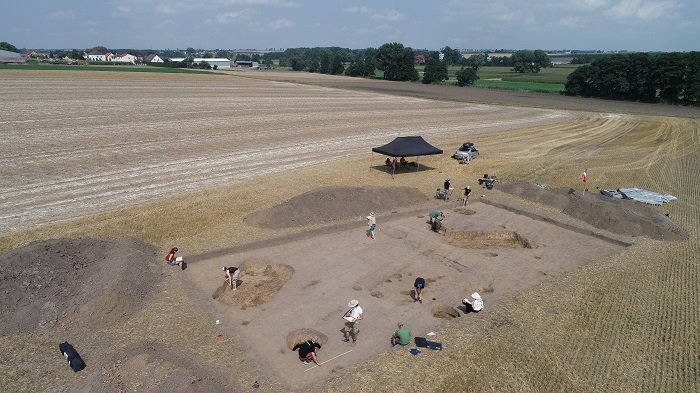2,000-Year-Old Celtic Dice Discovered In Poland
Archaeologists have been excavating at the Celtic settlement in Samborowice (Silesia) for a significant number of years. This year, a number of intriguing finds were made, and one of the most special ones is a 2,000-year-old dice that is the oldest one found so far in Poland.

The artifact is a cuboid made of bone or antler. According to Jacek Soida, archaeologist and curator of the Archaeology Department of the Silesian Museum, due to the low probability of rolling the dice so that it lands on either of its two smaller sides, the longer sides were usually marked with higher values (3, 5, 4 and 6).
‘However, there were exceptions to this rule, and in the case of the Samborowice dice, these sides were marked only with the two highest values: 5 and 6. We are not sure whether it was a forgery or the item was used for a game unknown to us today,’ he says.
Similar dice are known primarily from the so-called central settlements in Lower Austria, Bohemia, and Moravia.
“In smaller settlements, like the one in Samborowice, they are rarely discovered. But it is not the first example of a gaming item found in this settlement. A few years ago, we discovered ceramic tokens that were probably used for playing games,” Soida told PAP.
Celts once lived in a few regions of today’s southern Poland, including the Glubczyce plateau near Racibórz (in the southwestern part of the Silesian Voivodeship). They were present there from the turn of the 4th century to the end of the 2nd century BCE.
Soida points out that the work in the Celtic settlement in Samborowice is the only research of this type regularly conducted. ‘
“That is why every year it attracts numerous volunteers from all over Poland and often from other countries such as Czechia, the United States, and the Netherlands.
Celtic culture enthusiasts, who are not always archaeologists but also include lawyers, geologists, artists or employees of large corporations, are not afraid of hard work, and they help explore the settlement with great commitment. And this year, the weather conditions – drought and over thirty-degree heat – were very demanding,” the researcher says.
Another discovery made at the site is a well-preserved iron fibula, a type of decorative clasp for fastening robes. ‘
“Fragments of brooches are often discovered in settlements, but very rarely in such good condition, which makes this find unique. Iron objects that rest on the ground undergo significant destruction over the years due to corrosion. In this case, the brooch fell into the fire in the past, where, as a result of the high temperature, a layer of scale was formed on its surface, protecting the object against harmful corrosion.
Of course, we still need to remove layers of mineral sinters in several places, but there is certainly intact metal underneath”, the archaeologist says.

Moreover, during this year’s fieldwork, archaeologists discovered two more relics of buildings that were originally dug into the ground (so-called semi-dugouts).
“In such buildings, the Celts conducted various types of craft work, such as weaving, iron and non-ferrous metallurgy, horn-making, and pottery. Discoveries from previous years prove this”, recalls Soida.
Every year, discoveries bring archaeologists more and more answers about the life of the Celts in the area. In recent years, archaeologists found a weaving workshop and relics of a pottery kiln.
“Every discovery, even the smallest animal bone remains or ceramic jewelry fragments, is important to us because collecting all the details allows us to create a complete picture of this community. We hope for further discoveries in the coming years, including relics of further farm buildings,” Soida says.
Archaeologists examine the collected artifacts, and their work is summarized in publications in scientific journals. In the future, the researchers would also like to organize an exhibition.